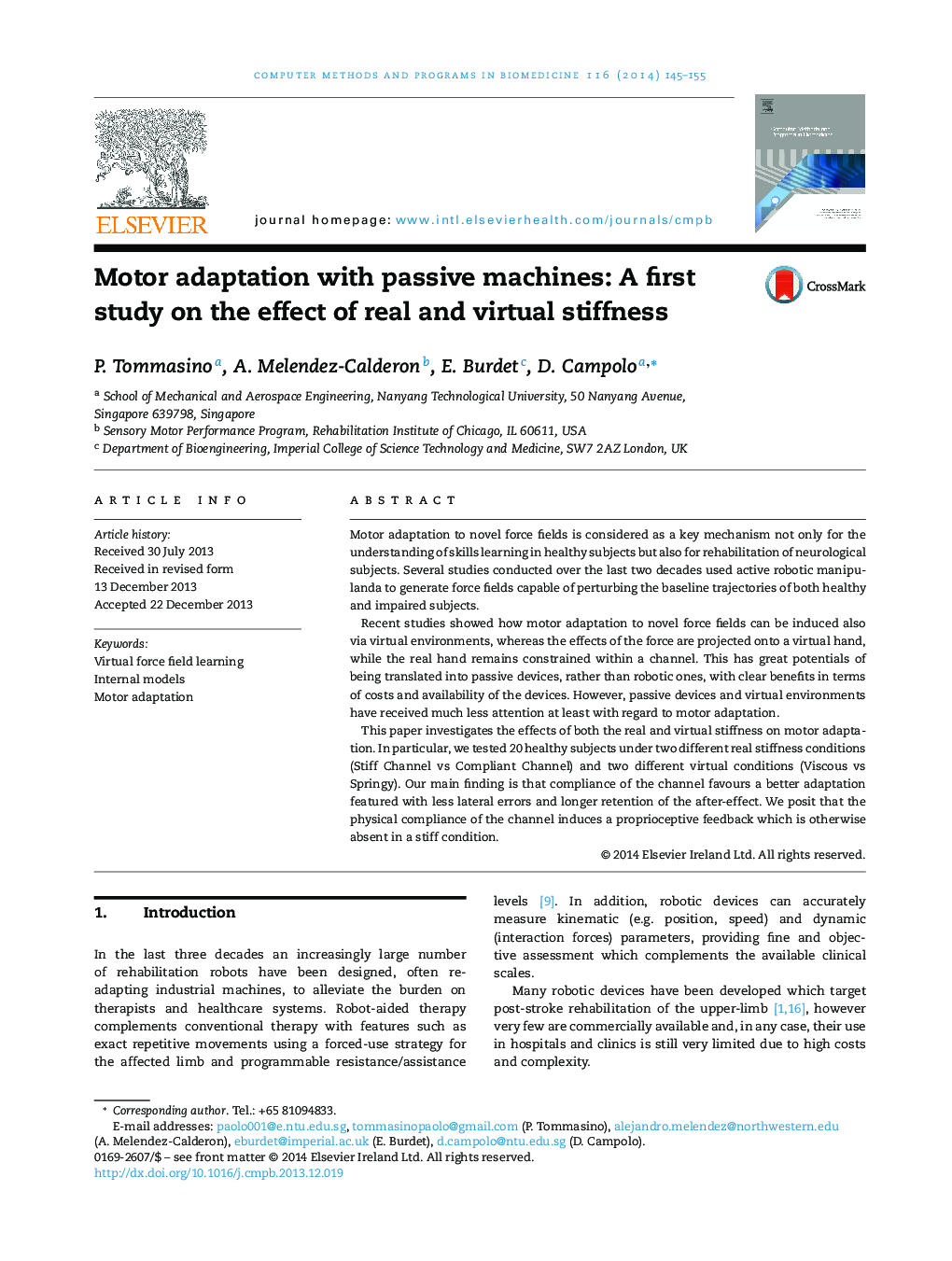| کد مقاله | کد نشریه | سال انتشار | مقاله انگلیسی | نسخه تمام متن |
|---|---|---|---|---|
| 467654 | 698099 | 2014 | 11 صفحه PDF | دانلود رایگان |
Motor adaptation to novel force fields is considered as a key mechanism not only for the understanding of skills learning in healthy subjects but also for rehabilitation of neurological subjects. Several studies conducted over the last two decades used active robotic manipulanda to generate force fields capable of perturbing the baseline trajectories of both healthy and impaired subjects.Recent studies showed how motor adaptation to novel force fields can be induced also via virtual environments, whereas the effects of the force are projected onto a virtual hand, while the real hand remains constrained within a channel. This has great potentials of being translated into passive devices, rather than robotic ones, with clear benefits in terms of costs and availability of the devices. However, passive devices and virtual environments have received much less attention at least with regard to motor adaptation.This paper investigates the effects of both the real and virtual stiffness on motor adaptation. In particular, we tested 20 healthy subjects under two different real stiffness conditions (Stiff Channel vs Compliant Channel) and two different virtual conditions (Viscous vs Springy). Our main finding is that compliance of the channel favours a better adaptation featured with less lateral errors and longer retention of the after-effect. We posit that the physical compliance of the channel induces a proprioceptive feedback which is otherwise absent in a stiff condition.
Journal: Computer Methods and Programs in Biomedicine - Volume 116, Issue 2, September 2014, Pages 145–155
